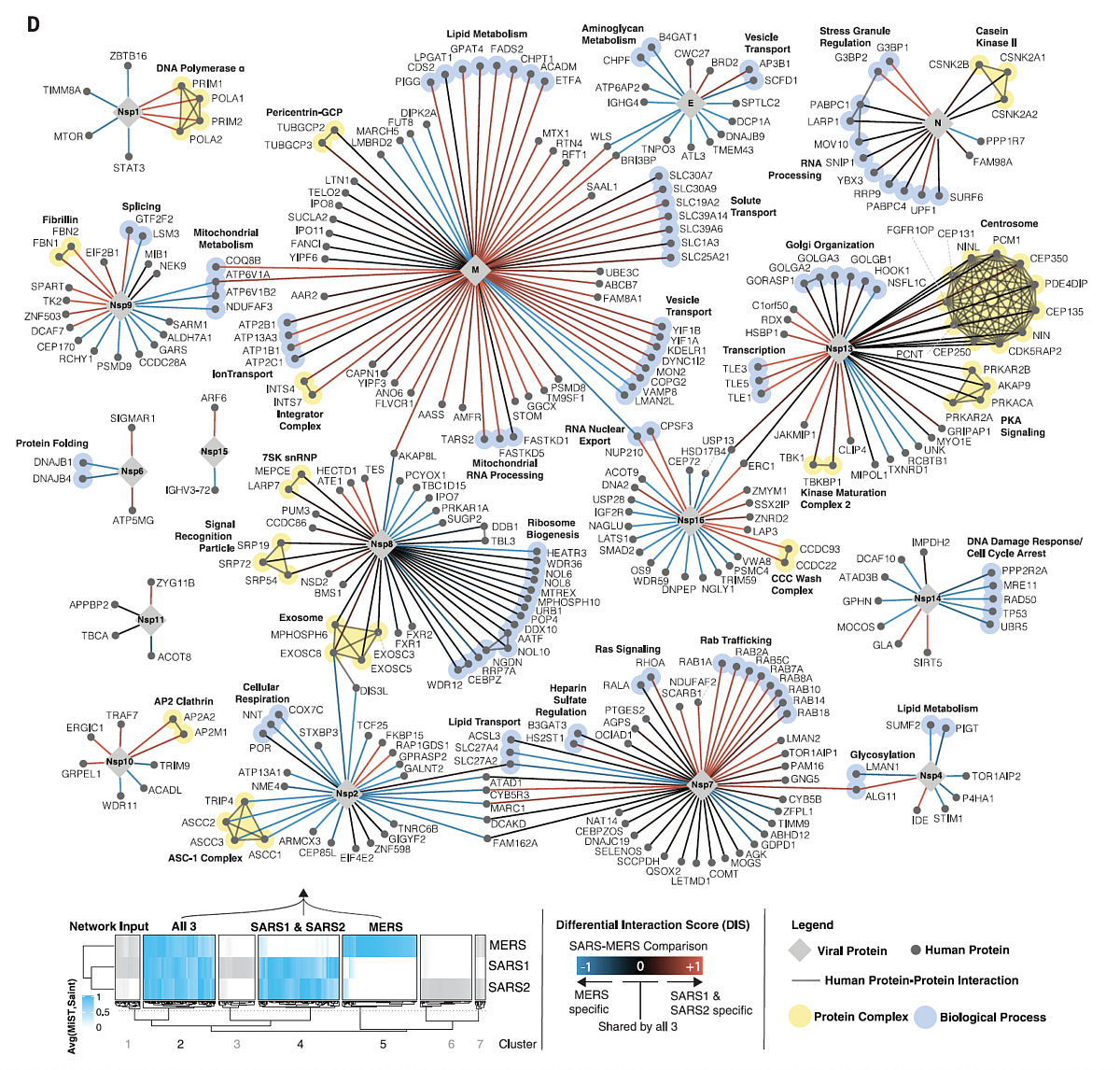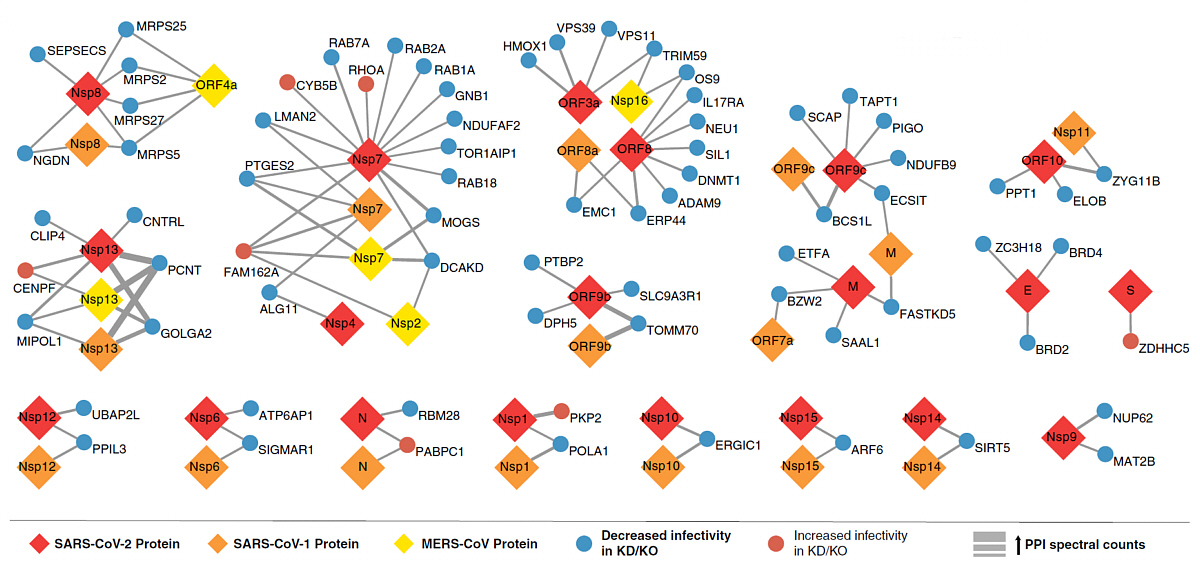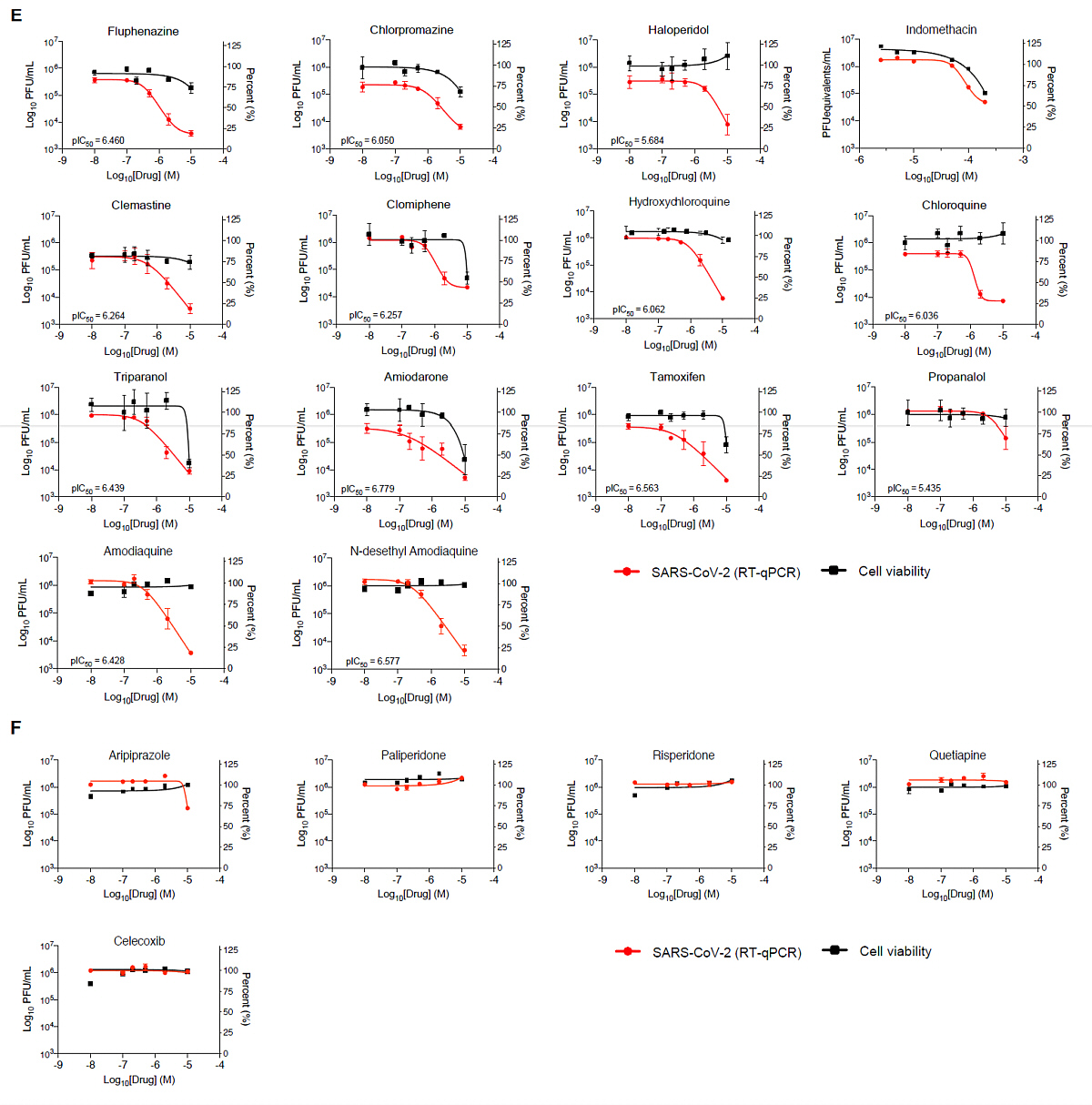 Biochemie zum Ansehen Home - Index - Site map Highlights of Biochemistry Biochemie zum Ansehen Home - Index - Site map Highlights of Biochemistry  |
Corona infection - what happens within us?
Corona viruses are structurally the most complex among all viruses. Their genome codes for 16 non structural proteins (nsp), four structural proteins and nine accessory factors. In a gigantic study (>300 scientists in >80 institutes) the influence of sars- and mers-viruses on the human body was investigated. The aim was to find common viral strategies so it would be possible to act faster in future pandemics. This is independent of vaccination strategies - here they search for possibilities to stop the viruses to multiply within us, with human targets in mind. As in all studies there were answers to questions (of which I can show fiew) and the discovery of new research topics (unanswered questions). The study results were published in december 2020 ( D E Gordon et al, Science 370 (2020) DOI: 10.1126/science.abe9403).The researchers investigated the interaction of 35 sars1/2 viral proteins each and mers-proteins with human cells of the cytoplasm, endoplasmatic reticulum, golgi-apparatus, mitochondria etc. After many experiments, evaluations and calculations they found a network of connections:

It seems like our whole body is afflicted by corona. To find a common item in this tangle, occuring in all deadly corona viruses, to develop some therapeutic means, on first view seems impossible. But there is hope: if you look at the effect of only those proteins eliciting an influence in infectivity in cell cultures, there is a simpler (if still complex) picture:

Of the potential candidates for the evaluation of medical treatment one is chosen here to show details.
Mitochondria are the organelles in our body cells to deliver energy. Their own DNA is very small, so they have to import all neccessary Enzymes for their function from the cytoplasm. Protein transport across cellular membranes is not trivial, it requires an elaborate transport system consisting of several proteins. A receptor in this complex is tom70, which additionally activates an antiviral signal protein which then induces the cell to die after viral infection.
The sars protein from reading frame 9b (orf9b) binds to tom70. This provokes less interferon production which then leads to failure of immune reaction against the virus. It seems that binding of orf9b to tom70 is essential for the course of the infection. So if we could inhibit the binding... The structural investigation of orf9b-tom70 binding shows the way to an inhibitor.
The researchers also tried whether known medical substances are effective against corona infections, guided by the above interactions in cell culture. In parallel they looked for the poisonous effect of these substances on the cells. Some results indicate the direction for further research.

| 17-7-2021 / Rolf Bergmann / http://www.papanatur.de/jsmol/coronahumanE.html |
|